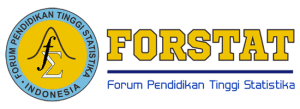STOCHASTIC MODEL ANALYSIS OF THE IMPACT OF MEDIA CAMPAIGN ON TRANSMISSION OF COVID – 19 EPIDEMIC.
Abstract
The COVID - 19 pandemic is currently causing authorities and public health officials more concern. The goal of the project is to convert a deterministic model for COVID-19 transmissions to a stochastic model, and then analyze the results to see how media-driven awareness campaigns have an impact on the disease's spread. The dynamic COVID-19 model was converted to a stochastic model, which was then examined. The model includes the following categories: Susceptible (S), Exposed (E), Infected class (I), Isolated class ( ), Aware class and Recovered class (R), as well as the Cumulative density of awareness programs by media denoted by . With the help of MATLAB, the converted model is then numerically solved using the Eula Maruyama approach, allowing the existence and uniqueness of the model to be examined. The implementation of awareness programs has been found to have a significant positive impact on the spread of COVID-19. As the rate of implementation of these programs rises, the population that is exposed to the virus and those who are infected with it declines, and it has been hypothesized that this will eventually cause COVID-19 to become extinct. According to the report, putting awareness campaigns into place can help stop the COVID-19 epidemic from spreading.
Keywords
Full Text:
PDFReferences
Asamoah J.K.K, Jin Z, Sun G.Q, Seidu B, Yankson E, Oduro F, Abidemi A, Moore S.E,
Okyere E (2021): Sensitivity assessment and optimal economic evaluation of a new COVID - 19 compartmental epidemic model with control interventions. Chaos Solitons Fractals 146, 110885, https://doi.org/10.1016/jchaos.2021.110885
Asamoah J.K.K, Owusu M.A, Jin Z, Oduro F, Abidemi A, Gyasi E.O (2020): Globa stability and cost - effectiveness analysis of COVID - 19 considering the impact of the environment: using data from Ghana . Chaos Solitons Fractals 140,110103 https://doi.org/10.1016/j.chaos.2020.110103
Abdo, M.S., Hanan, K.S., Satish, A.W., Pancha, K.: (2020): On a comprehensive model of the novel coronavirus (COVID-19) under mittag - Leffler derivative, Chaos solutions fractals 135, Article ID 109867.
Al - qaness, M.A.A , Ewees, A.A, Fan H, Aziz, A. El bd and EI, M.A (2020). Optimization methodfor forecasting confirmed cases of COVID - 19 in China. Journal of clinical Medicine, 9, 674. https://doi.org/10.3390/jcm9030674.
Allen E.J, Allen L.J.S, Arciniega A, Greenwood P.E (2008): Construction of Equivalent Stochastic Differential Equation Models; Stoch. Anal. Appl.26(2): 274 - 297.
Allen, L.J.(2008): An introduction to stochastic epidemic models, In Mathematical epidemiology (pp. 81-130), Springer,Berlin, Heidelberg.
Allen L. J. S. and Jr. L.,(2012): Extinction thresholds in deterministic and stochastic epidemic models, Journal of Biological Dynamics, 6, pp. 590-611.
Anastassopoulou, C, Russo, I, Tsakris A and Siettos C(2020). Data - based analysis, modeling and forecasting of the COVID -19 outbreak. PLoS One, 15, Article e0230405. https:doi.org/10.1371/journal.pone.0230405.
Ayinde, K, Lukman A.F, Rauf I.R, Alabi O.O, Okon C.E and Ayinde O.E (2020): Modeling Nigerian COVID - 19 cases: A comparative analysis of models and estimators. Chaos, Solitons and fractals,138, Article 109911.
Bastista M (2020): Estimation of the final size of the coronavirus epidemic by SIR model. Research Gate.
Djordjevic J, Silva C.J, Torres DFM (2018): A Stochastic SICA Epidemic model for HIV transmission. Appl. Math. Let.; 84: 168 - 175. Doi:10.1016/jani.2018.005.
Engbert R, Rabe MM, Kliegl R, Reich S (2020) Sequential data assimilation of the stochastic SEIR epidemic model for regional COVID-19 dynamics. Bull Math Biol 10000:1000. https:// doi. org/10. 1101/ 2020. 04. 13. 20063 7687
Fadugba, S.E., Adegboyegun, B.J. and Ogunbiyi, O.T. (2013) On Convergence of Euler Maruyama and Milstein Scheme for Solution of Stochastic Differential Equations. International Journal of Applied Mathematics and Modeling, 1, 9-15
Hay Yoba Talkibing , Barro Diakarya and Ouoba Fabrice (2019): Stochastic approach of epidemic model using the SEIRS; European Journal of Pure and Applied Mathematics. 12 (3) Pg 834 - 845.
Higham, D(2001): An algorithmic introduction to numerical simulation of stochastic differential equations. SIAM Rev. 43, 525 - 546.
He Sha, Sanyi Tang and Libin Rong (2020): A discrete Stochastic model for the COVID - 19 Outbreak: forecast and control. Mathematical Biosciences and Engineering. Vol.17, issue 4:2792 - 2804 doi:10.3934/inbe.2020153.
Ito K (1951): On Stochastic Differential Equation "memoirs of American Mathematical Society (4): 1 - 51.
Wu J, Fred Brauer and Pauline Van den Driessche (1945): Lecture Note in Mathematics. In Oxford Mathematical Biosciences subseries: P.K Maini, editor, Mathematical Epidemiology.
Jumanne M. Mnganga and Naboth Sindi Zachariah (2020): Mathematical Model of COVID - 19 Transmission dynamics and control strategies. Journal of Applied and Computational Mathematics. Vol. 9:1. DOI : 10.37421/jacm.2020.9.453
Kumama Regassa and Purmachandra Rao Koya (2019): Modelling and Analysis of Population Dynamics of Human Cells Pertaining to HIV/AIDS with Treatment, American Journal of Applied Mathematics. Vol. 7, No. 4, Pp127 - 136. Doi :10.11648/j.ajam.20190704.14.
Liu .Z, Magal P, Seydi O, Webb . C (2020): understanding unreported cases in the 2019- ncov
epidemic outbreak in Wuhan,China and importance of major public Health intervention, MPDI biology, 9(3) P.50.
Misra A.K, Anupama Sharma and Shukla J.B(2011): Modeling an analysis of effects of awareness programs by media on the spread of infectious diseases. Mathematical and Computer Modeling. 53: 1221 - 1228.
Mohamed Coulibaly* and Modeste N'zi (2021): A Stochastic Model with Jumps for the COVID-19 Epidemic in the Greater Abidjan Region during Public Health Measures. J. Infect Dis Epidemiol 2021, 7:196 Volume 7 | Issue 3 DOI: 10.23937/2474-3658/1510196
Nesteruk I (2020): Statistics - based predictions of coronavirus epidemic spreading in Mainland China, " innovative Biosystems and Bioengineering, vol. 4, no 1, pp 13 - 18.
Ndii, M.Z. and Supriatna, A.K.(2017): Stochastic mathematical models in epidemiology, Information, 20(9A), pp.6185-6196.
Ndairou F, Area I, Nieto J.J and Silva C.J (2018): Mathematical modeling of Zika disease in pregnant women and newborn with microcephaly in Brazil. Math Methods Appl Sci 41:89. 29 - 41.
Rihan F.A, Alsakaji H.J and Rajivganthi C (2020) : Stochastic SIRC epidemic model with time delay for COVID-19. Advances in Difference Equations ,2020:502 https://doi.org/10.1186/s13662020-02964-8
Rodrigues HS, Monteiro MTT, Torres DFM (2013). Sensitivity analysis in a dengue epidemiological model. Conference papers in mathematics. Hindawi, editor. Doi: 10.1155/2013/721406.
Stephen E, Kitengeso R.E, Kiria G.T and Felician N (2015): A Mathematical model for control and Elimination of the transmission dynamics of measles. Appl Math Comput 4:396 - 408.
Sultan Hussain, Anwar Zeb, Akhter Rasheed and Tareq Saeed (2020): Stochastic mathematical model for the spread and control of Corona virus. Advances in Difference Equations , 2020:574. https://doi.org/10.1186/s13662-020-03029-6
Tang .B, Bragazzi N.L, Li O, Tang .S, Xio .Y, Wu .J(2020): An updated estimation of the risk of transmission of the novel corona virus (2019-nCov). Infectious disease modeling, 5, pp 248 - 255
Van D.P and Watmough J (2020): "Reproduction number and sub - threshold endemic equlibria for compartmental models of disease transmission" Math. Biosc/180 :29 - 48.
W. Ming, J.V. Huang and C.J.P Zhang (2020): Breaking down of the healthcare system:
mathematical modeling for controlling the novel coronavirus ( 2019 - nCoV) outbreak in Wuhan, China, medRxiv and bioRxiv.
Zafer Bekiryazia, Tulay Kasemen and Mehmet Merdan (2017) : Stochastic and random models of malaria disease with vertical transmission. New trends in Mathematical Sciences; 5(1).Pg 269 - 277. Doi.org/10.20852/ntmsci.2017.146.
Zizhen .Z, Anwar .Z, Sultan .H and Ebraheem .A(2020): Dynamics of COVID - 19 Mathematical model with stochastic perturbation. Advances in Difference Equations , 2020:451. https://doi.org/10.1186/s13662-020-02909-1
DOI: https://doi.org/10.34312/jjps.v3i2.15878
Refbacks
- There are currently no refbacks.
Copyright (c) 2022 Jambura Journal of Probability and Statistics

This work is licensed under a Creative Commons Attribution-NonCommercial 4.0 International License.







.jpg)






